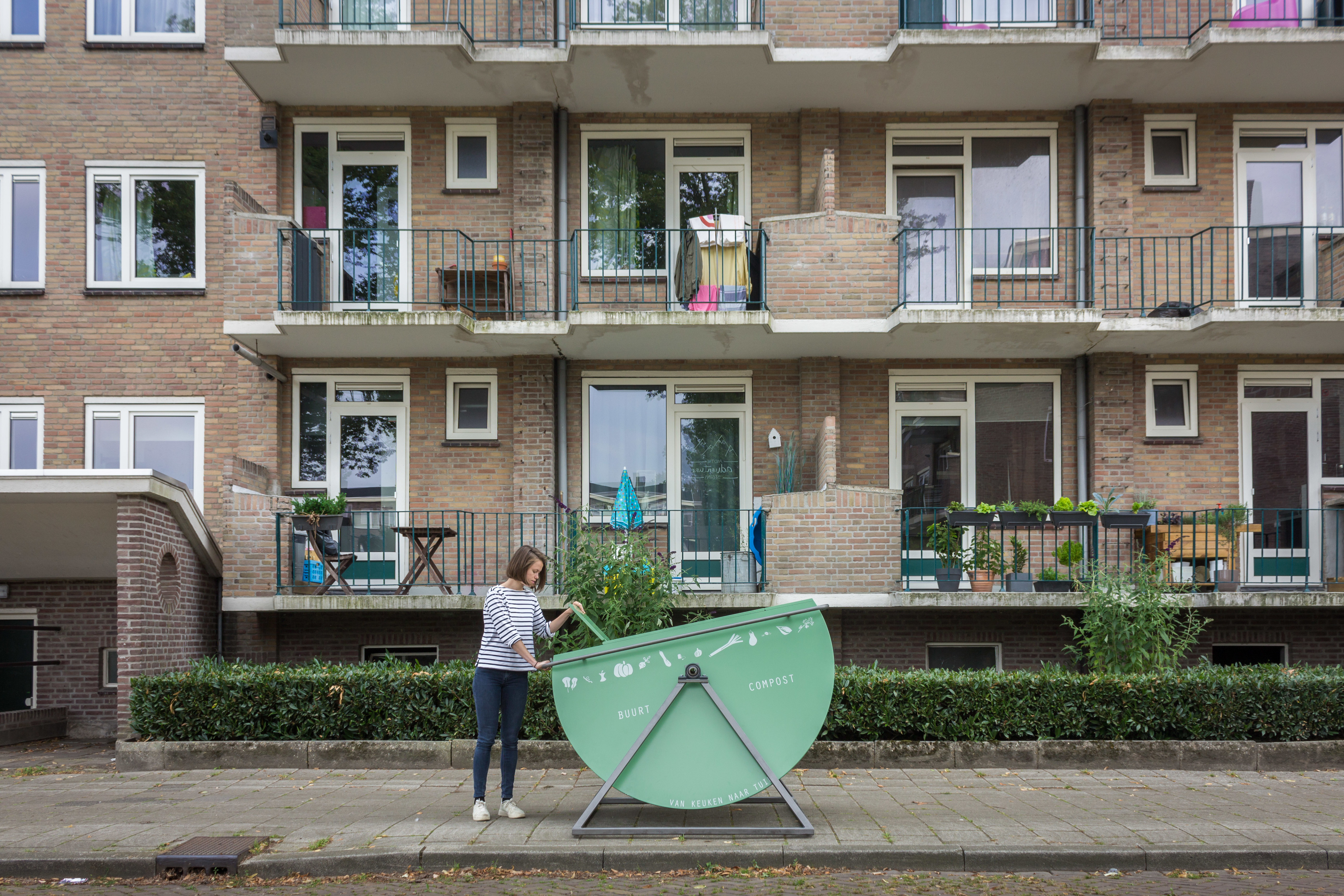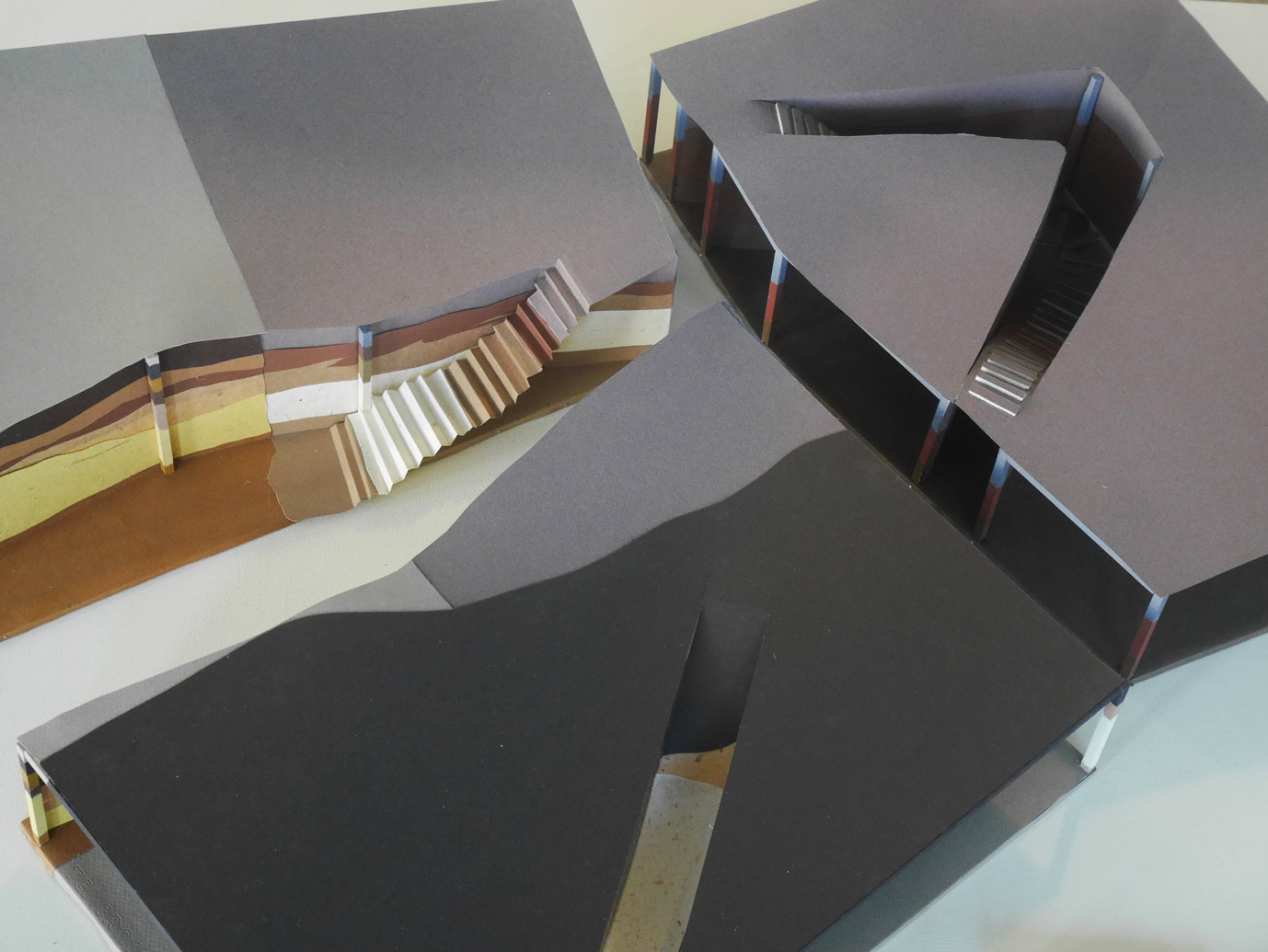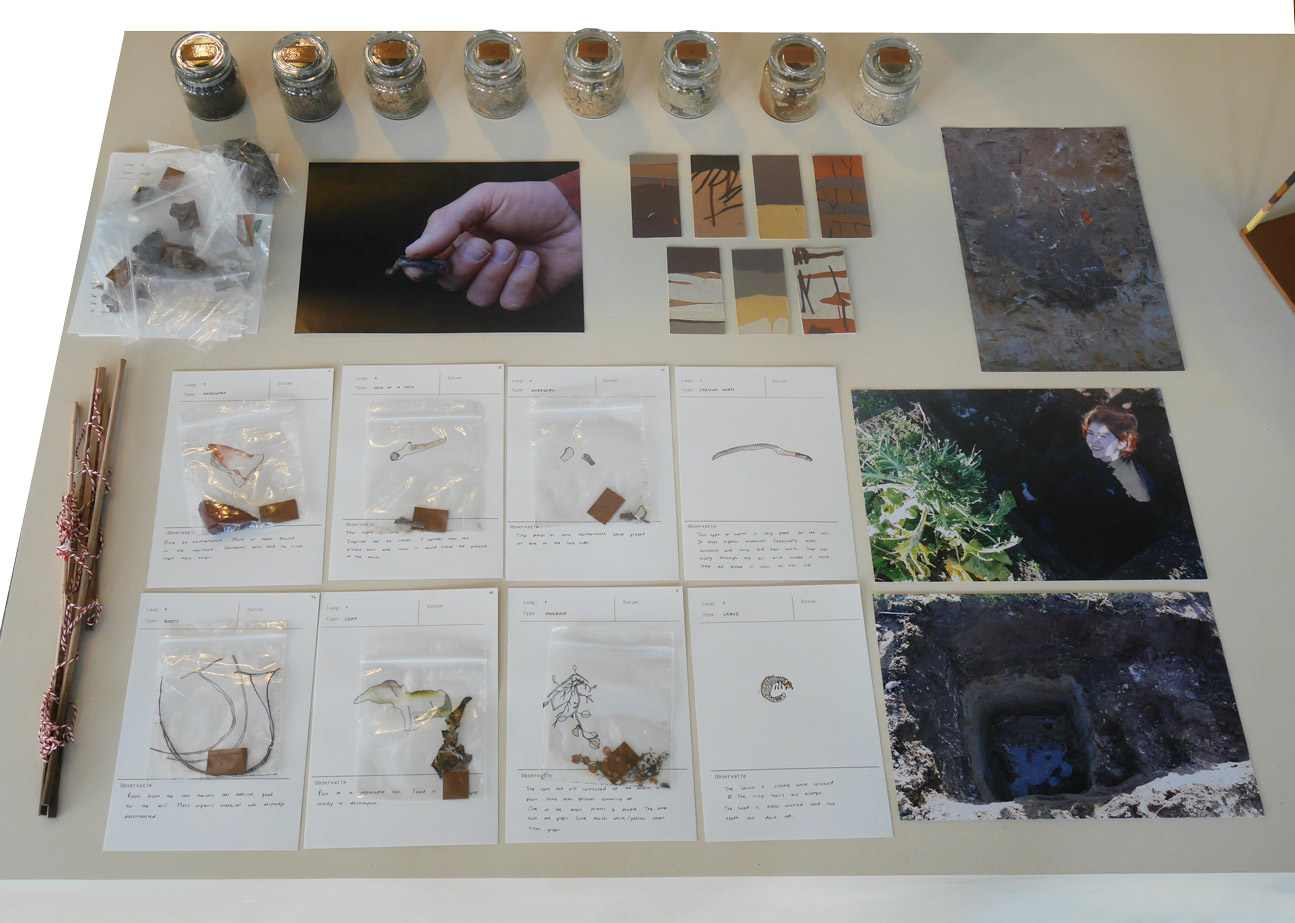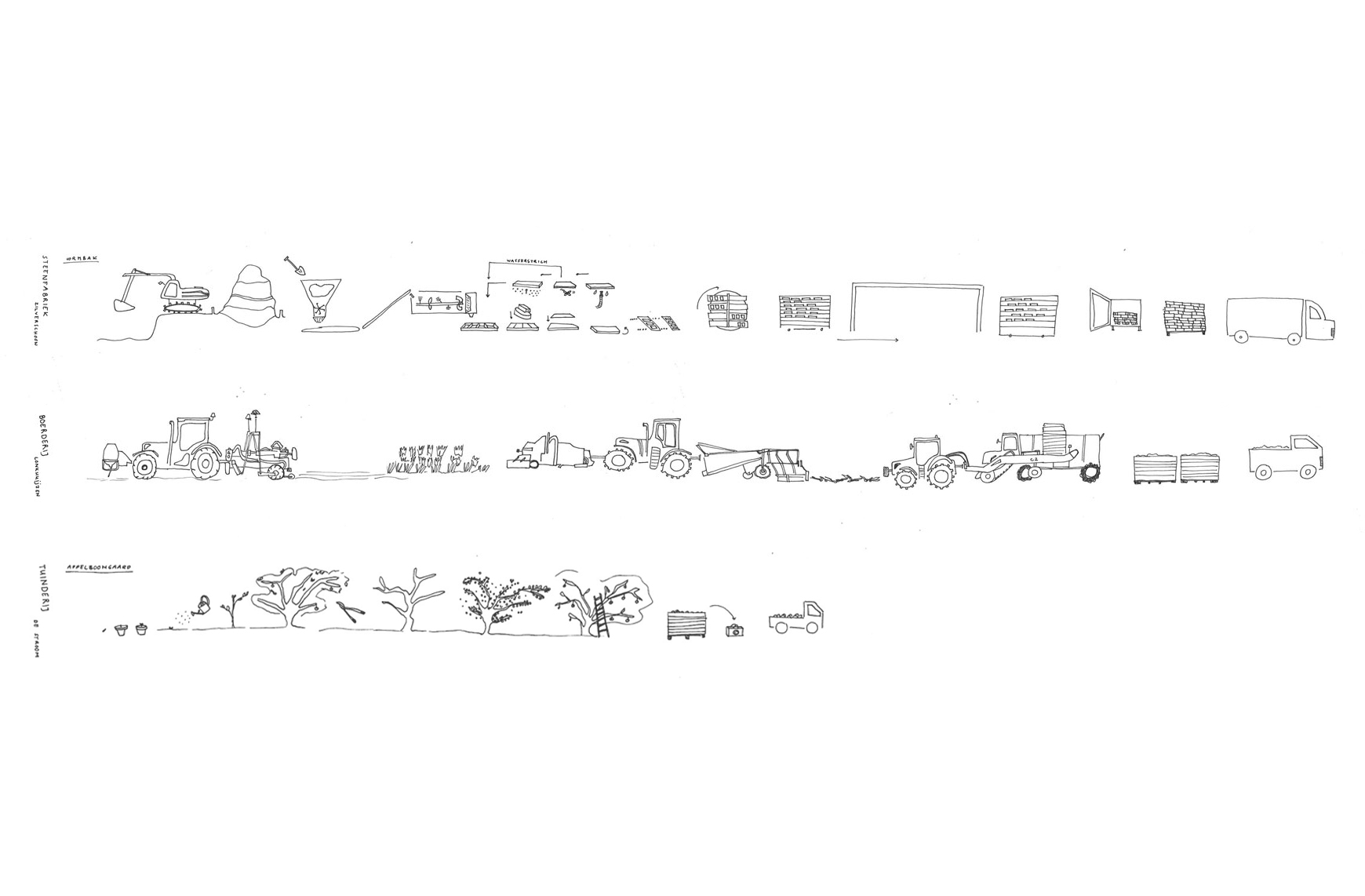Elise
Weegels
—
This website features my older personal work.
I am currently working as a social designer at Afdeling Buitengewone Zaken.
Check out what we do at www.afdelingbuitengewonezaken.nl
I am currently working as a social designer at Afdeling Buitengewone Zaken.
Check out what we do at www.afdelingbuitengewonezaken.nl
Buurt Compost
Public Space



Buurtcompost is a collective composting bin meant for multi storey buildings. Everyday kitchen scraps are easily converted into a fertile product, but in many cities it is not possible to request an organic bin when not owning a garden.
Buurtcompost makes it possible to compost organic waste in an easy way. Waste is a source for nutrients and resources; the interaction by swinging the bin and the collective ownership are aiming to make the users experience these qualities.
Together with the participating neighbors the shape get’s filled with kitchen scraps. In addition, the caretakers of the surrounding greenery add brown organic material. When placing the scraps inside and giving it a few swings the bin is rocking, flipping the compost inside. After each three months, the compost is ready to be taken out, brought to a nearby vegetable garden, home plants and the greenery in the area. As there will be a surplus, part can be sold. In this way, a cycle within the area is created.
The bin is a proposal of how this could work and what place it takes within the community as an object. This prototype is the trigger for a further development of the concept.
Graduation project, Public Private, DAE
Photo credits: Mitchell Van Eijk
Buurtcompost makes it possible to compost organic waste in an easy way. Waste is a source for nutrients and resources; the interaction by swinging the bin and the collective ownership are aiming to make the users experience these qualities.
Together with the participating neighbors the shape get’s filled with kitchen scraps. In addition, the caretakers of the surrounding greenery add brown organic material. When placing the scraps inside and giving it a few swings the bin is rocking, flipping the compost inside. After each three months, the compost is ready to be taken out, brought to a nearby vegetable garden, home plants and the greenery in the area. As there will be a surplus, part can be sold. In this way, a cycle within the area is created.
The bin is a proposal of how this could work and what place it takes within the community as an object. This prototype is the trigger for a further development of the concept.
Graduation project, Public Private, DAE
Photo credits: Mitchell Van Eijk
Wormenpad
Natural Environments






A walking route through different soils and by the houses of worms. Offering a different view on the landscape, an inside in soils inhabitants. Being able to see the relation between what happens above and below on soil level. Questions rise like: What can grow on top? How does what grows on top
influence the quality of the soil? Giving the history of a place.
You can discover, by slowly going down. Deciding yourself how deep you want to dive into the knowledge. By seeing different soils you get a better idea of the diversity and relation.
After my research into nature conservation and natural cycles the importance of soil came clearly up, especially with 2015 being the year of the soil. The question was how can we create re-appreciaten, engagement and knowledge about the soil? How can we get amazed again by all life happening under our feet? This is a subtle way to reintroduce to power of earths crust.
Food-non-food, DAE
influence the quality of the soil? Giving the history of a place.
You can discover, by slowly going down. Deciding yourself how deep you want to dive into the knowledge. By seeing different soils you get a better idea of the diversity and relation.
After my research into nature conservation and natural cycles the importance of soil came clearly up, especially with 2015 being the year of the soil. The question was how can we create re-appreciaten, engagement and knowledge about the soil? How can we get amazed again by all life happening under our feet? This is a subtle way to reintroduce to power of earths crust.
Food-non-food, DAE
Boomband Baksteen
Research Methodology







'A cross-over of local productions in a river landscape'
I explored an area in the mid-east of The Netherlands called the ‘Overbetuwe’: a river landscape between the Rhine and the Waal. Curious about the power of the landscape, the way the river shaped the land and the agronomic (fruit) and industrial (bricks) productions taking place on the spot.
The ‘boomband baksteen’ derived from a question about hyper locality: What is produced on location with the river clay? While doing field research in the area I became really inspired by the energetic atmosphere, especially by the young entrepreneurs. The orchards and the brick factory are, in that sense, a signature of the area. Therefore I explored the possible crossovers between those two. This methodology gave surprising results. One of those is the ‘boomband baksteen', a brick inspired by the orchard. Its shape is derived from the connection of the fruit tree with the tree pole, sustaining the tree during its growth in the clay. A tree tire is fastened between the pole and tree forming an in-between shape. This silhouette provides the base for the bricks, revealing a diverse range of patterns.
The ‘boomband baksteen is made with local clay, in the brick factory, inspired by the orchard and returning back to the trees as a product.
Graduation project, Public-Private, DAE
The brick is produced at Steenfabriek Zilverschoon Randwijk
I explored an area in the mid-east of The Netherlands called the ‘Overbetuwe’: a river landscape between the Rhine and the Waal. Curious about the power of the landscape, the way the river shaped the land and the agronomic (fruit) and industrial (bricks) productions taking place on the spot.
The ‘boomband baksteen’ derived from a question about hyper locality: What is produced on location with the river clay? While doing field research in the area I became really inspired by the energetic atmosphere, especially by the young entrepreneurs. The orchards and the brick factory are, in that sense, a signature of the area. Therefore I explored the possible crossovers between those two. This methodology gave surprising results. One of those is the ‘boomband baksteen', a brick inspired by the orchard. Its shape is derived from the connection of the fruit tree with the tree pole, sustaining the tree during its growth in the clay. A tree tire is fastened between the pole and tree forming an in-between shape. This silhouette provides the base for the bricks, revealing a diverse range of patterns.
The ‘boomband baksteen is made with local clay, in the brick factory, inspired by the orchard and returning back to the trees as a product.
Graduation project, Public-Private, DAE
The brick is produced at Steenfabriek Zilverschoon Randwijk